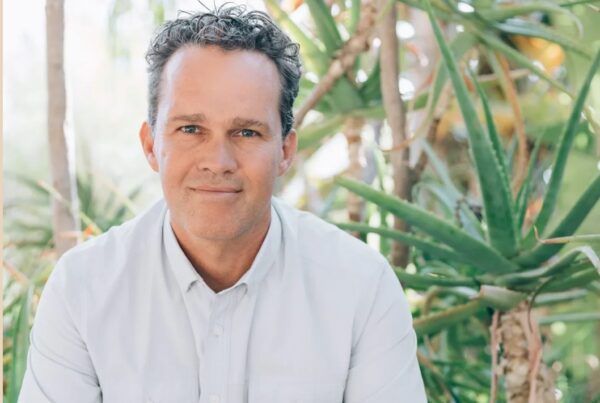In our busy lives, we often neglect our health. We tend to focus on the more immediate demands of our careers and families, putting off lifestyle changes that could give us the resilience to cope with those demands. Speaking at the recent Global Vitality Conference in London, Cass Sunstein, former advisor to Barack Obama and professor of behavioral science and economics at Harvard Law School explained some key principles to building healthy habits.
And while our responsibilities to our families and jobs are often (though not always) fairly well defined, many of us struggle to understand how to manage our health. There’s no shopping list or monthly sales quota to meet – and no process to get us there.
Set the right goals to ensure healthier habits
Setting the right goals is an article of its own. But once you’ve decided what you want and identified some lifestyle changes to get you started, how do you keep yourself on track? Most of us aren’t exactly wired to stick to a new diet or exercise program.
That’s why we’re excited to share some of the insights discussed at the Global Vitality Conference 2024, held in London in March. One of the goals of the conference was to share the results of a study called The Vitality Habit Index. The project began in 2017, with the collection of data relating to the behavior patterns and health outcomes of over a million people in the Vitality group’s health insurance programs in the United Kingdom and South Africa. Despite today’s global health challenges, the results were extremely encouraging.
Harvard expert shares key insights
The keynote speaker was Cass Sunstein, former advisor to Barack Obama and professor of behavioral science and economics at Harvard Law School.
He’s also co-author of Look Again: The Power of Noticing What Was Always There, a book about resetting our brains to live happier, more fulfilling lives. Throughout the conference, Sunstein shared key findings from behavioral science that could transform our approach to our health.
6 Behavioral Challenges
Behavioral science has a lot to teach us about improving our health. Understanding how the human mind works can help us to choose the right goals, form habits to reach them, and sustain those habits, potentially for the rest of our lives.
Sunstein begins his presentation by sharing six behavioral challenges that can interfere with our efforts to make lasting change:
- Bias toward the present: This is a big one. According to Sunstein: “The future is a foreign country, ‘later-land,’ let’s call it, and people aren’t sure they’re ever going to visit.” This week is front and center, it’s really big, and the next decade is small and hard to discern for many of us.” This can make it hard to work up the energy to improve our long-term health.
- Inertia (sticking to the status quo): Sunstein explains that what’s happening now is “powered by inertia.” He says that inertia can make something as simple as switching the times of day you brush your teeth feel quite jarring.
- Unrealistic optimism: People are unrealistically optimistic about themselves. “About 90% of people think they’re better than the average driver and less likely to be involved in a serious accident,” says Sunstein. This can lead to unrealistic goals, especially when it comes to diets and workout routines.
- Limited attention: The number of things any of us can pay attention to at any given time is often fewer than the number of things we “should” be paying attention to. This is why people who are focused on their families and careers so often struggle to give their health the attention it deserves.
- Loss aversion: Losses feel about twice as bad as an equivalent gain feels good. Sunstein explains that if you heard that doing something meant you’d experience a certain gain in money or health, you’d feel some level of happiness. But if you heard that you’d lose that much if you didn’t do it, your degree of unhappiness would be much greater.
- The affect heuristic: Sunstein refers to the effect heuristic as “my candidate for the least appreciated finding of behavioral science”. This mental shortcut is similar to the halo effect. If something makes us feel happy or energized, we’re likely to associate it with other good things. If the way we feel about it (our “affect”) is unpleasant, we’ll make negative associations.
5 Keys to Sustainable Habits
In 2012, a group known as the Behavioral Insights Team (BIT) published some suggestions for managing these obstacles. Their recommendations were created for policymakers, but we can use them to help us form sustainable habits. They called their framework EAST, for easy, attractive, social, and timely.
Sunstein shares an addition to this framework: making things fun. Of course, change is seldom fun, though it can be enjoyable. But FEAST is a much better (and more fun!) acronym than EEAST.
Let’s take a look at each part of this FEAST
Fun was added to the list when researchers realized the value of enjoyment in making habits stick. Sunstein points out that we’re less interested in serious products or experiences than those that make our day a bit more upbeat and joyful. Marketers understand this. Did you know that in packaging, “frustration-free” is just another term for “green”? Green packaging is good, of course, but it’s serious. Avoiding frustration is more upbeat (or at least less “downbeat”) and therefore more effective.
You might enjoy hiking or walking in nature more than heading to the gym for an intense workout. Or maybe dance classes are your thing. Of course, sports are the classic way to make health and fitness fun. You might enjoy paddleball, which you can play on your own or with others.
If you decide to change your diet, stay away from foods you don’t like. Enjoying your food will help you stick to the changes. The point is to find something you enjoy so you can start looking forward to it.
Making things fun, or at least not unpleasant, works with our bias toward the present and helps us overcome the power of inertia.
Make it Easy
Easy is the most important item on the list.
Sunstein quotes Daniel Kahneman, who emphasized a finding from the 1920s. Rather than pushing people in their preferred direction, he suggested that it would be smarter and more effective for policymakers to ask themselves, “Why aren’t they doing it anyway?” and focus on removing the obstacles. Sunstein points out that people who live close to a courthouse are less likely to be evicted. Why? Because those who live farther away are less likely to show up, for their court date, which gets them evicted. Those who do show up have the chance to argue their case.
If time and money are obstacles, choose inexpensive activities that don’t take long. Go on a ten-minute walk during your break. If you work from home, put on some music and dance. Make enough simple, healthy snacks to last all week.
According to Sunstein, making something automatic is the first prize, with simplification coming in second. Making things easy is a great way to deal with our bias toward the present and minimize the effects of optimism bias.
Rewards work
Attractive includes attracting attention as well as the attractiveness of a reward (or the unpleasantness of negative consequences). Drawing our attention to our new habits counteracts the limits of our attention, while rewards work with our bias toward the present (or at least the near future). Scheduling reminders on your phone or putting up pictures that remind you of your goal are some ways you can focus your attention. As we’ll see in the next point, some of the best rewards can be as simple as spending time with people who make you feel good.
Find a friend
Social value is the second most influential factor. This includes both social activity and social norms. You can make use of this by exercising with a friend or rewarding yourself with some extra social time as you stick to a new habit. Social norms are also powerful, so if you hear that everyone’s getting an app and counting their steps, you’re more likely to try it out. There’s one other aspect of “social” to consider: social media. It pays to note how your social media time is affecting your healthy habits. If you’re watching videos that leave you feeling fat or lazy or just not good enough, changing that might be the key to your success.
Be open to changing bad habits
Timely has two aspects: receptivity and immediacy. The best time to suggest a change is when the other person is most receptive to it – and the same is true for yourself. If your favorite jeans have gotten too tight, now might be a good time to lose some weight. Immediacy is about that bias toward the present. Living a few more years would be nice, but that idea belongs to Sunstein’s later land. Fitting into those jeans could happen a whole lot sooner – and not fitting into them is happening right this minute.
As you may have noticed, these suggestions have one thing in common: they’re about how you feel. Maybe that’s why Sunstein is so impressed by the effect heuristics.
Putting It All Together
Using this information, the Vitality team provided a simple process for creating and sustaining healthy habits. The foundation of this process is something called “habits laddering”. It consists of three steps:
- Set a target: Your goal should be achievable based on where you are now. For example, someone who’s not physically active would struggle to run a race or walk 10,000 steps in a day. A short walk a few times a week might be a more realistic place to start. If you’re upgrading your diet, you might start by eating more vegetables or cutting back on sweets on certain days of the week.
- Start small: Choose an activity that’s easy and practical and do it consistently. When you’re ready, increase the frequency but not the intensity. If you’ve been eating a healthy lunch or going for a walk three days a week, add another day. For the first six to eight weeks, focus on consistency and slowly increase the frequency.
- Repeat, then intensify: When you’re ready, gradually increase the intensity of your activity. That could mean walking faster, farther, or both. If you’re counting steps, Vitality suggests you avoid increasing your daily average by more than 800 steps per week; their data shows that people who do so are less likely to stick with it. If you’re eating a healthier lunch, this could be the time to eat that way more often or find even healthier options.
The bottom line
The key is to start small. Too much intensity too soon makes us more likely to give up. The data shows that Vitality members who formed the habit of walking 5,000 steps three times a week maintained that habit 50% longer than those who started exercising with high-intensity workouts. The results also demonstrate that maintaining a small amount of physical activity has lasting health impacts, regardless of age, risk factors, and health status.
So start small, as small as you like. Then add a little at a time. Before you know it, you’ll feel the difference – and that good feeling will keep you going.





![women [longevity live]](https://longevitylive.com/wp-content/uploads/2020/01/photo-of-women-walking-down-the-street-1116984-100x100.jpg)










